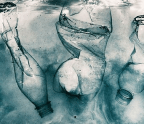
Understanding the connection between stress and chronic pain is the key to combating it for good, says Dr David Hanscom
There has been a lot of controversy around the treatment of chronic pain, and patients and physicians alike are frustrated by the inability to solve it. Chronic pain is a complicated phenomenon shaped by many influences, and modern medicine’s approach is to offer simplistic, random solutions while ignoring current neuroscience that points the way to a new paradigm. The current definition of chronic pain is“. . . an embedded memory that becomes associated with more and more life experiences, and the memory cannot be erased.”1 Understanding how this process evolves and the neurochemical nature of chronic pain is the first step to resolving it.
“IN MOST CASES THE PAIN WORSENS SIMPLY BECAUSE OF THE WAY THE BRAIN PROCESSES REPETITIVE STIMULI”
The evolution of chronic pain
The brain is a dynamic structure, changing every millisecond. New nerve cells are formed, additional connections through small tentacles called dendrites are created, myelin (the insulation around the nerves) thickens and thins, and glial cells (supporting structural cells) undergo ongoing revision. The constantly changing nature of the brain, called neuroplasticity, allows us to learn and adapt quickly.
To understand how you came to develop chronic pain, we need to consider these ongoing changes within the nervous system. Three significant factors contribute to the development of chronic pain: 1) Sensitisation, 2) Memorisation and 3) the “Modifiers”— anxiety, anger and sleep. By addressing all aspects of it, chronic pain is a solvable problem.
Sensitization
I have encountered scores of patients who strongly believed that, if their chronic pain got worse, some anatomical problem was






